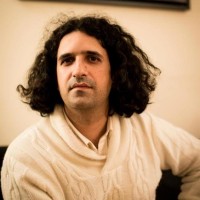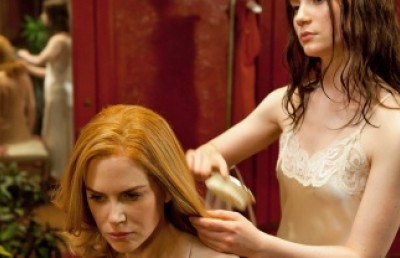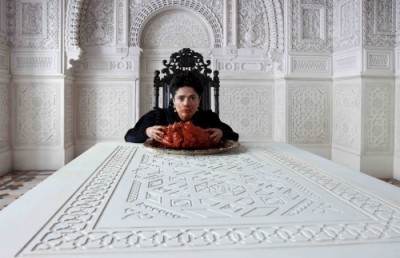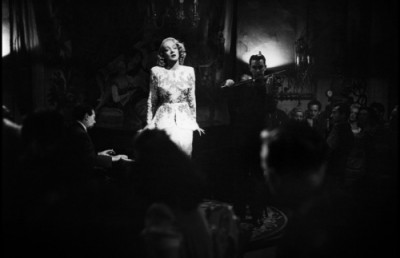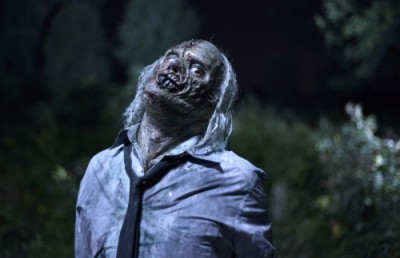Interview with Shahram Mokri about Fish & Cat (2013)
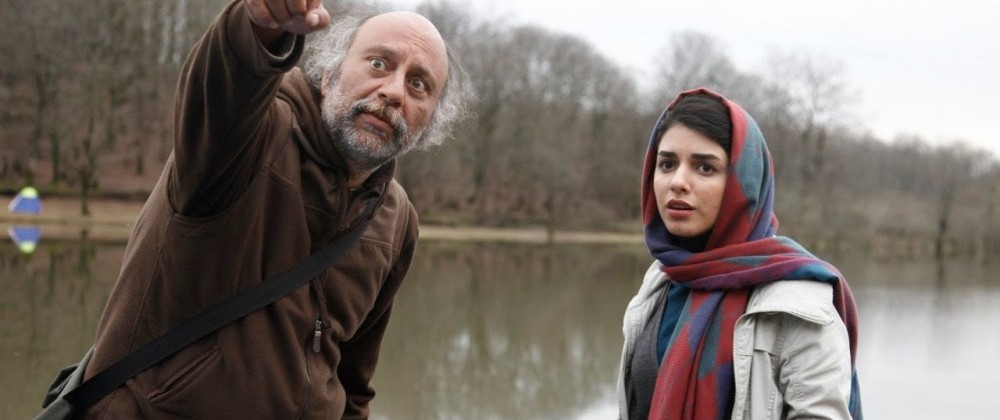
Although the use of digital cameras is becoming very common in cinema, it is difficult to think of a digital movie that has effectively expressed the passage of time in the contemporary era. Most movies that do this well are products of the analog era. Various contemporary filmmakers like Aleksandr Sokurov tried to use creative ways to establish the relationship between digital technology and cinema. Although time does pass in such films, we can hardly feel it happening. Shahram Mokri is among the latest generation of young directors who has entered the field with “Fish & Cat.” Fish & Cat (2013) is a unique experience in Iranian cinema since the whole story of the film is actualized in one long 130-minute sequence-shot. The following interview with Mokri explores this film.
Offscreen: What was your preliminary plan for this film?
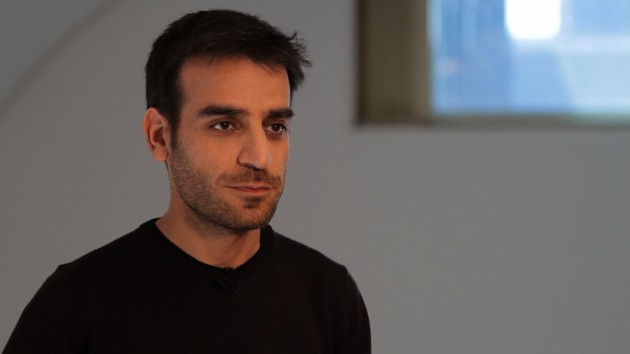
Shahram Mokri
Shahram Mokri: I started as a directing student at Tehran University at a time when digital cameras first appeared in Iran, thus making film production easier and eliminating the time-related limitations of analogue cameras. This made me think about how I could change the preliminary rules of cinema, such as the connection between the shots and time. I also reflected on the time limitation of analogue camera in the shots and how this could be resolved using digital cameras. Meanwhile, I was attracted to the magical three-dimensional metamorphosis view of M. C. Esher’s drawings and found it to be the equivalent of the non-linear narrations and manipulation of time in the cinema. I was always interested in the idea of disordering the narration of a story and when I was a university student I had this experience of making a short film based on puzzling non-linear narration models. So, with this background, I tended to combine the long take with Esher’s drawings and a non-linear narration, which is how Fish & Cat was made.
Offscreen: Time is the main preoccupation in your film and playing with time and its circular movement is lovely. However, it seems that you are reluctant to make a time perception experience. For example, one of the visible points about time in your film is the high quality of engineering since you have taken into account the slightest details regarding the experience of time. For example, if there is a flashback to the past then the connection between the shots in different times is emphasized, mainly by a parallel voice. This technique, which we have named “time engineering,” helps the audience discover how the story progresses. However, we believe that this kind of time engineering, which is binding doesn’t make any sense for the ontological concept of time. Time passes by in your film but the perception of a pure time is impossible; there is no authentic hesitation. Just as seen in Waiting for Godot, to prove that we live through the time, there should be some hesitation and patience. We can’t see this in your film since the actions occur one after another. Don’t you think that you sacrificed the time in favor of a plainer and more understandable story?
Shahram Mokri: I aimed to perform the impossible in Fish and Cat. We conceptualize time as being linear and our brain places the scattered narrations in the cinema into linear-time order. Sometimes, reviewing the scene of an accident gives a new impression of time, which verifies the live and independent nature of time. In Fish & Cat, time is consciously being mechanized due to the application of a different aspect of the time which has not been considered before and which is not experimented with in everyday life. Your question about time is my concern as well since in Fish & Cat time has been intentionally manipulated in order not to be driven into a linear direction as it is in real life. In the film, we have four time circles, the largest of which passes out of the frame of the film and is seen only in the beginning and the end; the other three time circles are similar, one in the heart of the other. However, in order to illustrate the dynamic and passing nature of time, we have applied some signals in the circles like the blood-stained head of Parviz or the sequence of Babak and Parvaneh, which includes a small time circle and challenges the spectator’s mind.
Offscreen: The film was made with a digital camera in one shot. Digital technology has enabled us to make such long films more easily, so we are no longer in Hitchcock’s time when producing a ten-minute sequence such as in the film Rope was extraordinary. In recent years, various directors have tried to make such one-shot films using the newly- available innovations. As an innovative person, what have you done to make your work look different? What was your approach?
Shahram Mokri: Producing one-shot film on its own is not considered as an advantage. Thanks to digital cameras, spectators are not excited any more for a ten-minute sequence such as in Rope. The reaction of contemporary spectators to a one-shot film is that “Why do they endure such hardship to make a film?” My point was to put the second question into effect. I used a long take in order to challenge the power of the human brain in navigating time into a linear position.
Offscreen: There is something about the digital camera that bothers us. We have access to this technology but its distinct influence in configuring the images of film has yet to come. We still evaluate the digital camera’s representations by means of the ones produced before by analogue cameras. We use digital cameras to represent analogue images, and rarely see someone like Peter Greenaway who makes variations out of digital images. As someone who uses a digital camera, what do you think prevented this technology from starting a cinematic revolution? Does Fish & Cat have a solution to this disadvantage?
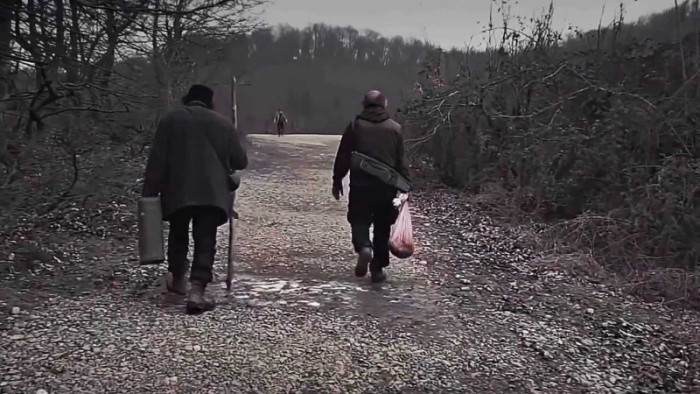
Shahram Mokri: In my opinion, the reason why digital cinema is not able to actualize its digital potential is the power of the big companies. After having arrived, digital camera changed filmmaking into a more personal phenomenon but this attitude has now changed and a director knows well that the production of a film using a digital camera is just as costly as one using a negative camera. This transition is imposed by big companies and digital cameras need a market to find their own place in the cinema. The digital camera provides filmmakers with choices to decide based on their needs and priorities. It gives them the freedom to choose.
Offscreen: There is a part of film in which a girl looks at the lake with a sudden change of the perspective and this scene inspires a surreal and dreamlike space similar to that seen in Hayao Miyazaki’s works. This part appeals to me a lot but we don’t see any other such eye catching scenery of this kind in the film. Why is that so?
Shahram Mokri: Now that I see the film from the outside, I wish I could have included more scenes like that. In fact, that small part represents the whole ideology of the film and you may see several synchronized elements in that scene:
1) Approaching a surreal space
2) A Glance at the idea of “Dejago”
3) The final destiny of the characters
Regarding the long take concept, the first definition which comes to mind is Andre Bazin’s since it actually has a parallel definition of the realistic performance. But in the long take of Fish & Cat, I tried to prevent the film from approaching to the realistic concept. In the last dreamlike scene, we see the film through the eyes of a girl who is hit in the face by a kite while she is watching them fly around. As a result of this accident, she becomes able to see things that others cannot. It seems that this scene represents the kite flying dreams of these young adults coming true but these dreams are not guaranteed to have a happy ending.
Offscreen: Robin Wood says that horror films refer directly to the political and social conditions of a society with the fearful elements of the film being composed of the factors which are repressed by the society. According to him, in horror films we come across the repressed factors which return in the form of scary elements of the movie, but which are finally repressed in the movie, thus proving the reasons why they were repressed in the first place. In this respect, the horror genre is always classified as a social genre. We would like you to tell us a little about the social aspect of Fish & Cat, which has rarely been taken into account by the critics. To what extent do you consider Fish & Cat to be a social film?
Shahram Mokri: I also believe that horror films refer to political and social conditions and the social approach is very important to me. The initial plan could have been based on a military story but I deliberately chose the horror genre due to Iran’s political and social conditions. This is because the most important characteristic of Iran’s society is the suspension in which people are stuck, almost as though they are waiting for an accident every moment of their lives – while driving, in the bank, on an airplane, or waiting for an attack on their home. The Iranian mind is waiting for these incidents and the horror film is the best genre to illustrate their feelings and emotional conditions. In America, the most common murder weapon is the gun but in Iran it is the knife, which is why I chose this for the film.
Offscreen: Your film is classified among those paranoid postmodern horror films frequently made in the 1980s. It features all of the relevant elements, such as the failure of human beings to work things out, the existence of an antihero, an increase in irregular actions at the end of the film, a danger which stimulates internal rather than external fear, victims who have gathered in a camp, and an open ending. These postmodern film characteristics seem to have had a huge influence on your film. Contrary to the films like Scream, the murderer and the victim in your film are in two different groups. Also, despite the slaughter taking place, there is no bloodshed and the final girl is very different from the usual final girl characters. As a whole, Fish & Cat has every factor needed to qualify as a postmodern horror film. Have you been inspired by some contemporary horror cinema? And how did you start to get interested in horror cinema and why a postmodern experience?
Shahram Mokri: In postmodern horror cinema from the 1980s onward, we have different components such as the beginning of Scream in which a masked character stabs a blonde girl, which is in line with the norm of having an innocent girl be the first victim in many such films. In my film, Maral’s murder scene is the one occurs in the opening of the movie. Fish & Cat is actually the repetition of this opening ten minutes but for 120 minutes. My interest in horror movies refers back to the time when they were smuggled into Iran since they were popular while this genre matched the emotional conditions of Iranians.
Offscreen: How was the film been received at festivals?
Shahram Mokri: Fish & Cat stands apart due to its differences with other general Iranian movie. The film won its first award at the Venice Festival, was received warmly by the audience, and also met my own satisfaction. Afterwards, at a festival in Istanbul, it gained both the special awards of the critics and the juries. Till now, it has won 14 or 15 awards.
Offscreen: As a final question, can you tell us about your future works?
Shahram Mokri: My next work is a script that I’m working on with Nasim Ahmadpour, who also helped me to write Fish & Cat. This film concerns some young Iranians in New York but I’d better not to give out more information. The other script, which is more likely to become a movie, is about an epidemic disease spreading throughout Iran which is similar to the End Of Time genre but dressed in the Iranian style.

